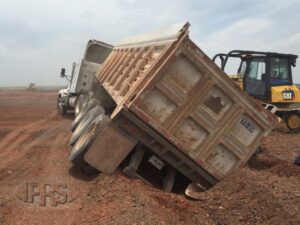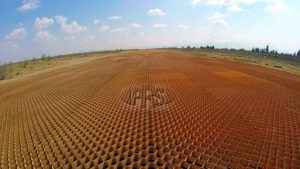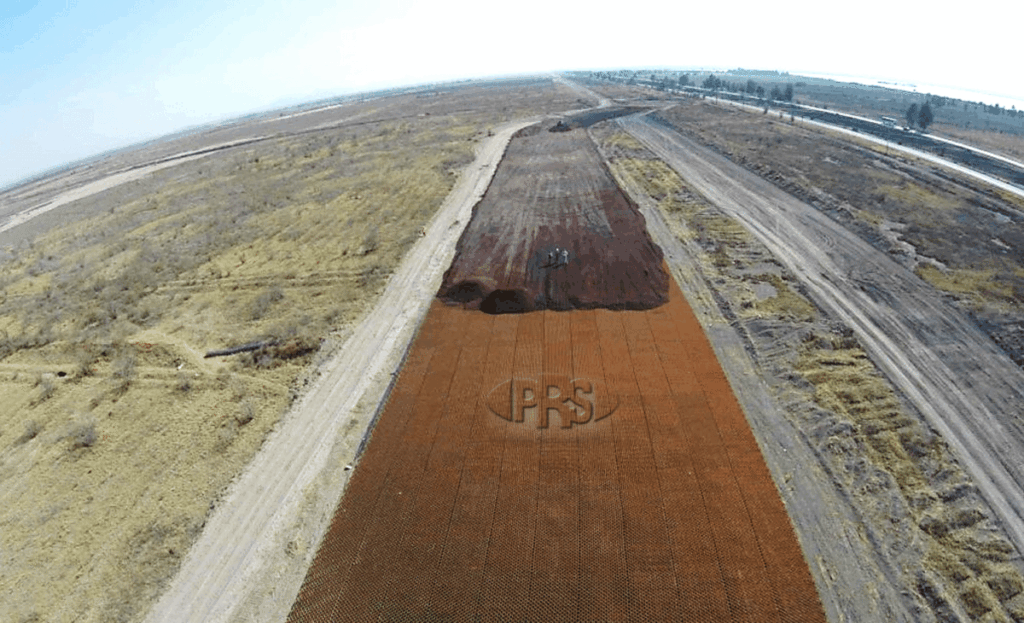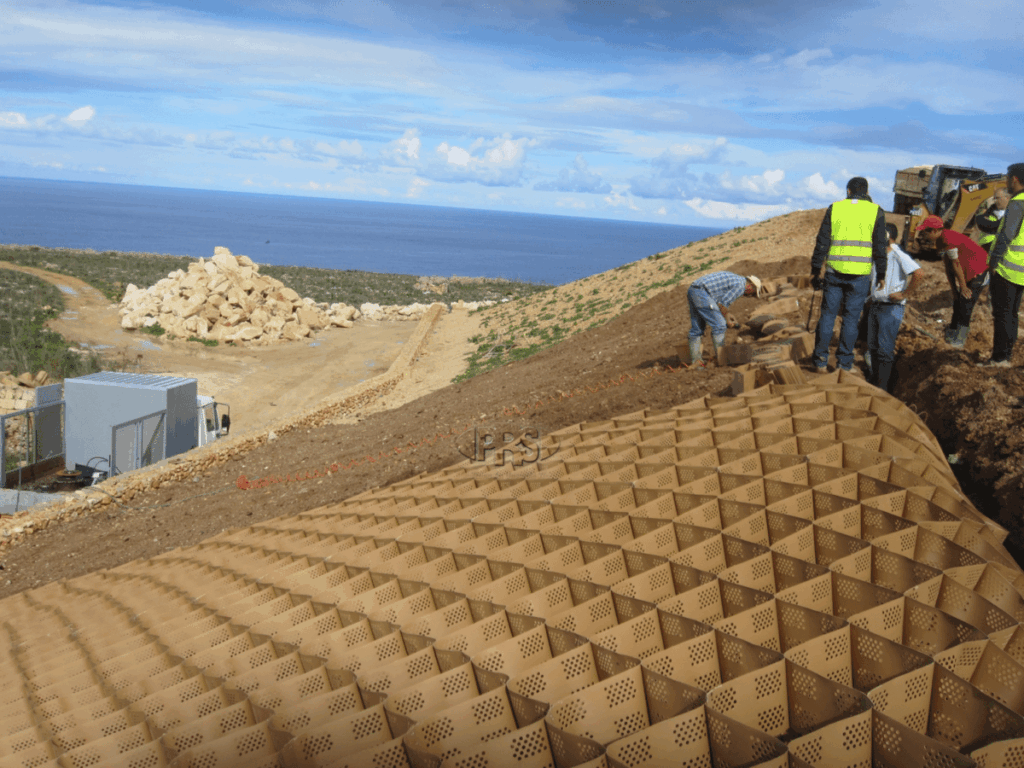This is the challenge facing the planners of the $9.5 billion NAICM (New International Airport Mexico City) project. The plan for the New Mexico City Airport is to be one of the largest, most futuristic and sustainable airports in the world. The project involves an international consortium of designers, engineers and a lot of national pride.
But the question was how to build one of the world’s most ambitious airports on unstable, saturated and sinking soil (CBR < 1%)? British architect Lord Norman Foster, leading one of the international design firms stated: “the soil has a high-water content and has little capacity to support large loads. In addition, the area is seismic, and the effects of ground movement are magnified by the soil type in the area. Finally, the site is subject to substantial settlement over time, from groundwater extraction for the city’s drinking water supply.”

Construction machinery crack the 60 cm upper crust and sink into the deep soft clay mud.
Unreinforced construction and soil stabilization methods would simply not work in this terrain or are too expensive. The NAICM engineering authorities conducted a 4-month comparison test of several different soil stabilization solutions, such as multiple layers of geogrids, other geosynthetics products and other conventional solutions. At the end of this testing period the results were clear – after hundreds of passes of heavily loaded (45 ton) truck traffic over the Neoloy Tough-Cells, the onsite demonstration section showed no surface deformation or potholes and no settlement.

Other geosynthetics and conventional solutions failed field testing
Neoloy Tough-Cells are the only qualified solution for soil reinforcement in the New Mexico City Airport. The NAICM solution included integration of a “sacrificial” geogrid layer under the Neoloy Tough-Cell. This acts as a stable working platform, which improves the performance of the geocell installed above it. Quality testing proved that structural layer stiffness and modulus increased by a factor of 3.5x, even though a lower-quality infill material was utilized.
In addition, this unique and proven technology allowed the use of lightweight local volcanic rock called ‘Tezontle’ as infill material, which saved construction time and lowered the weight of the overall pavement structure, a critical factor in the construction.

Improve performance, reduce aggregates layer and use local infill
Neoloy Tough-Cells can be installed in all weather conditions. According to Mexico’s Transportation Minister, it allowed construction during the rainy seasons, saving about ONE year of construction time. In his brief to the press, he stated that this “innovative technology enabled one of the most ambitious projects in the world to become a reality”.

Neoloy Tough-Cells reduced construction time by ONE year
Read Land&Water Published Article “Geocells Keep Mexico City’s New Airport from Sinking” March, 2017



PRS Geo Technologies Ltd.
Copyright © 2025 PRS Geo-Technologies. All Rights Reserved.